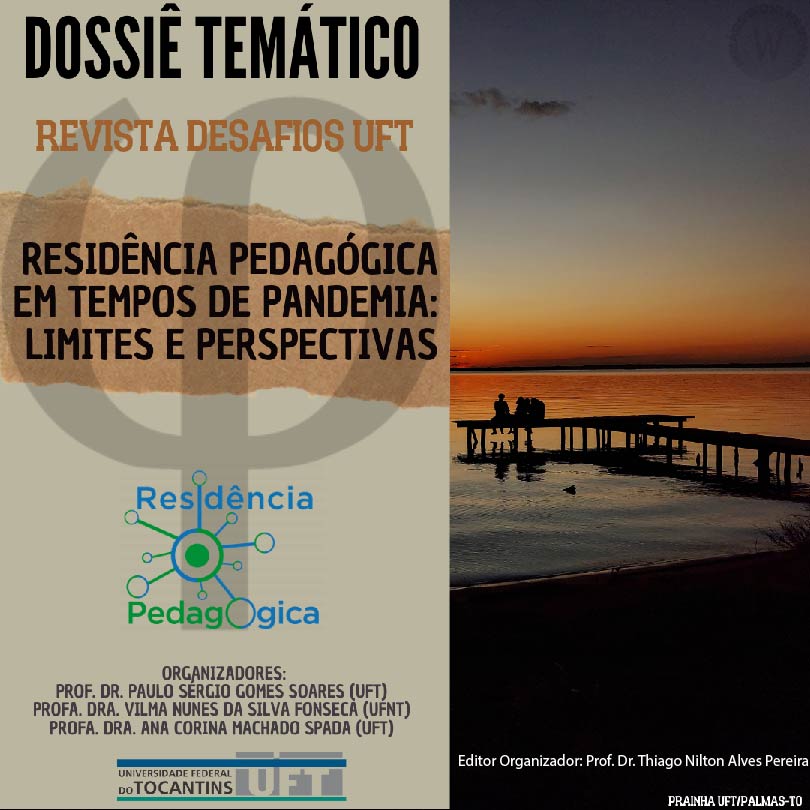O USO DO DISCO DE NEWTON COMO ATIVIDADE EXPERIMENTAL DE VERIFICAÇÃO DE CONCEITOS ÓPTICOS
DOI:
https://doi.org/10.20873/RP2023_8Resumo
Ensinar Física de forma didática, simples, que leve o aluno a compreender o assunto e sua importância no cotidiano foi, e ainda é, um desafio para os docentes. Ainda mais em tempos de pandemia, no qual os decentes e discentes se depararam com um cenário repleto de adversidades. O presente trabalho teve como objetivo mostrar uma alternativa para ensinar conceitos físicos relacionados à óptica, de forma mais significativa, mediante o desenvolvimento de uma atividade experimental de verificação, com materiais de baixo custo com o intuito de contribuir/proporcionar uma maior compreensão e aprendizagem dos conteúdos abordados. O experimento em questão foi o Disco de Newton que, após sua execução e explicação do conteúdo, teve como estratégia de avaliação a aplicação de questionários para verificar se os alunos gostaram da metodologia utilizada e se houve alguma aprendizagem deles. Por meio do questionário pôde-se inferir que grande parte dos alunos compreenderam o conteúdo, pois responderam as questões com exatidão, usando-se de argumentos e conceitos físicos corretamente. Estes resultados mostram que a atividade foi bem aceita pelos estudantes, os quais demonstraram muito interesse e participação, e que houve entendimento sobre os conceitos ópticos abordados no experimento.
Downloads
Publicado
Como Citar
Edição
Seção
Licença
Copyright (c) 2023 Pâmella Gonçalves Barreto Troncão, Edgar Duarte da Silva, Patrícia de Sousa Brilhante, Luana da Silva Soares, Eliezer Fernandes Sodré Júnior

Este trabalho está licenciado sob uma licença Creative Commons Attribution-NonCommercial 4.0 International License.
Autores que publicam nesta revista concordam com os seguintes termos:
1. Autores mantém os direitos autorais e concedem à revista o direito de primeira publicação, com o trabalho simultaneamente licenciado sob a Creative Commons Attribution License (CC BY-NC 4.0), permitindo o compartilhamento do trabalho com reconhecimento da autoria do trabalho e publicação inicial nesta revista.
2. Autores têm autorização para assumir contratos adicionais separadamente, para distribuição não-exclusiva da versão do trabalho publicada nesta revista (ex.: publicar em repositório institucional ou como capítulo de livro), com reconhecimento de autoria e publicação inicial nesta revista.
3. Autores têm permissão e são estimulados a publicar e distribuir seu trabalho online (ex.: em repositórios institucionais ou na sua página pessoal) a qualquer ponto posterior ao processo editorial.
4. Além disso, o AUTOR é informado e consente com a revista que, portanto, seu artigo pode ser incorporado pela DESAFIOS em bases e sistemas de informação científica existentes (indexadores e bancos de dados atuais) ou a existir no futuro (indexadores e bancos de dados futuros), nas condições definidas por este último em todos os momentos, que envolverá, pelo menos, a possibilidade de que os titulares desses bancos de dados possam executar as seguintes ações sobre o artigo:
a. Reproduzir, transmitir e distribuir o artigo, no todo ou em parte sob qualquer forma ou meio de transmissão eletrônica existente ou desenvolvida no futuro, incluindo a transmissão eletrônica para fins de pesquisa, visualização e impressão;
b. Reproduzir e distribuir, no todo ou em parte, o artigo na impressão.
c. Capacidade de traduzir certas partes do artigo.
d. Extrair figuras, tabelas, ilustrações e outros objetos gráficos e capturar metadados, legendas e artigo relacionado para fins de pesquisa, visualização e impressão.
e. Transmissão, distribuição e reprodução por agentes ou autorizada pelos proprietários de distribuidoras de bases de dados.
f. A preparação de citações bibliográficas, sumários e índices e referências de captura relacionados de partes selecionadas do artigo.
g. Digitalizar e / ou armazenar imagens e texto de artigo eletrônico.


